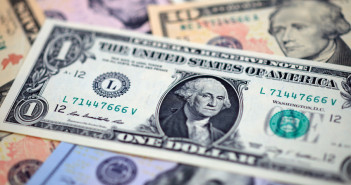The US dollar enjoyed two years of substantial strength on monetary policy divergence from the rest of the world.
And now, when the historic rate hike is basically around the corner, with more to come, will it continue rising? Here are the arguments for a stronger USD, for a weaker one and also a speculation for the moves.
The case for a stronger dollar
Arguing for a stronger dollar, we can say that the expected hike in December is historic and was doubted: the Fed hasn’t raised rates since 2006 and many doubt we would reach this moment. In addition, the Fed had already skipped previous opportunities to hike the rates, most notably in September, so will they really act?
All this leads to expectations that the historic rate hike will be greeted with a stronger dollar initially and stronger with every additional hike.
A rate hike by the usually dovish Fed (and consequent hikes) show that even this cautious institution is confident in the US economy. Confidence in the US economy implies confidence in the US dollar.
Confidence in the US economy also implies investments in the US, something that would further strengthen both the economy and the greenback.
And even if the process is very gradual as the Fed has often reminded us, the Fed is not likely to undo the move, or “pull a Trichet” by unwinding the moves anytime soon. No monetary easing from the Fed distinguishes it from other central banks, most notably those with the printing machines: the BOJ and the ECB.
And, the Fed is not worried about inflation, that is mostly due to energy prices. The fall in the price of the black gold is a net boon for the US economy.
The case for a weaker dollar
First and foremost: history. History teaches us that with every tightening cycle we had a weaker dollar in the aftermath. A wide “buy the rumor, sell the fact”. History doesn’t repeat itself, but certainly rhymes.
Another reason for a weaker dollar originates from its strength: a long period of a high exchange rate implies a struggle for US exporters. While this is mostly felt in complaints in the quarterly reports of companies, also the Fed has expressed some concern. A long period of a strong dollar could be followed by a reversal.
A strong dollar also has implications for other parts of the world. Sure, exports to the US are more attractive, but servicing debt denominated in US dollars becomes harder, especially as interest rates rise. The IMF has already expressed worries about emerging markets, in this context of debt. This may have repercussions for the US: a boomerang effect.
The Fed doesn’t really need to get cold feet in order to see a limited tightening cycle: they have always said that the final rate will be lower than previous cycles. Nevertheless, markets have been focused on the timing of the first move. What happens once markets look one step forward?
My conclusion
I believe we will see a year of two halves: a stronger US dollar at first, as the rate hike is historic and not fully priced in, and so are subsequent ones. The United States economy and monetary policy stand out.
However, the global economy is not that strong and the US cannot lift it on its own. A strong dollar could weigh and reverse, even if the tightening cycle continues gradually, very gradually.
What do you think?
More: Top 10 Trade Ideas for 2016
